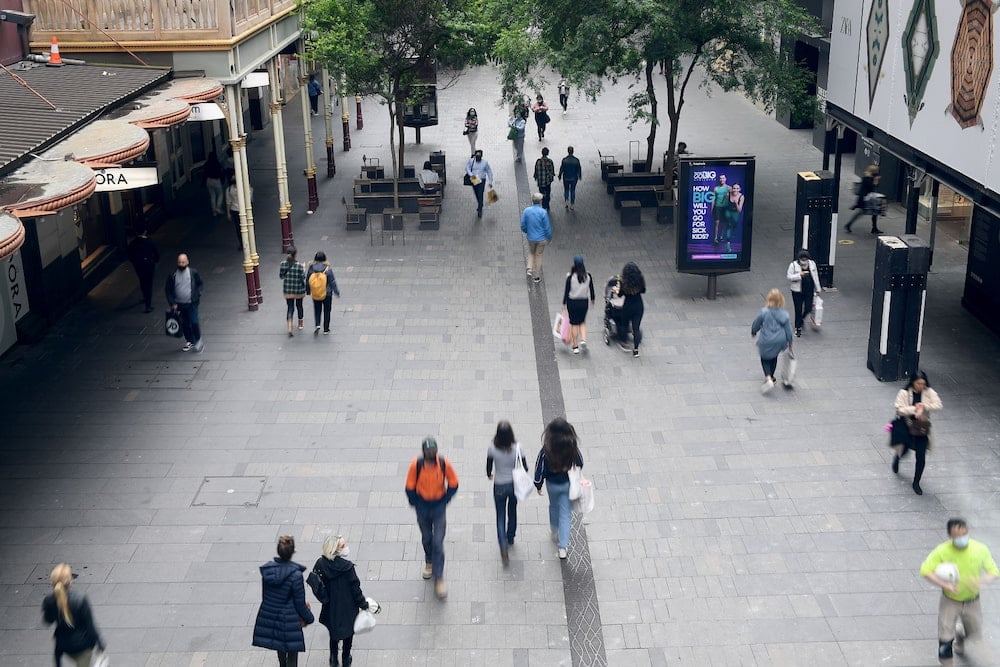More than a quarter of million jobs have been lost in Australia in the past two months as a result of coronavirus lockdowns in NSW, Victoria and the ACT.
New figures show the number of people in employment in September alone fell by 138,000.
“The numbers tell us that the pandemic continues to impact the workforce extensively and this impact will continue whilst lockdowns are enforced,” Employment Minister Stuart Robert told reporters on Thursday.
But he expects stronger employment results in November and December as states come out of lockdown, as seen in the past.
NSW eased restrictions on Monday, the ACT is reopening on Friday and Victoria is set to emerge from lockdown later this month.
Even so, shadow treasurer Jim Chalmers said the government wanted to withdraw economic support while the unemployment rate rose.
“This government wants to pull the rug out from under small businesses and workers at the same time as hundreds of thousands of Australians either lost their job or gave up looking for work,” he told reporters.
The unemployment rate ticked up to 4.6 per cent in September, having unexpectedly eased to a near 13-year low of 4.5 per cent in August as a result of people giving up searching for work.
“The low national unemployment rate continues to reflect reduced participation during the recent lockdowns, rather than strong labour market conditions,” Australian Bureau of Statistics head of labour statistics Bjorn Jarvis said.
The participation rate of those in work or seeking employment fell further in September to 64.5 per cent, from 65.2 per cent.
“This was the third consecutive monthly decline from the near historic high of 66.2 per cent in June 2021 and continued the pattern of large falls in participation during lockdowns,” Mr Jarvis said.
The number of hours worked rose by 15 million or 0.9 per cent, a slight recovery after a large 3.7 per cent fall in August.
However, there are now 111,000 fewer people employed and two per cent fewer hours being worked than in March 2020 and before the pandemic.
BIS Oxford Economics chief economist Sarah Hunter said there was unlikely to be a material improvement in jobs data until the November figures.
“Notwithstanding the capacity for a robust recovery in the economy, it is likely to be well into 2022 before the labour market fully recovers,” Dr Hunter said.
Meanwhile, Reserve Bank of Australia deputy governor Guy Debelle indicated the central bank is not about to follow other central banks into tightening monetary policy.
Last week, the Reserve Bank of New Zealand lifted its key interest rate, while the US Federal Reserve is mulling whether to pull back on its stimulus.
“The circumstances here in Australia … both wages and inflation, are quite different from those we are seeing in other countries,” Dr Debelle told an online conference.
Australia went into the pandemic with persistently low wage outcomes – much lower than what was being seen in comparable countries.
“COVID hasn’t changed that picture,” Dr Debelle told the CFA Australia Investment Conference.
“Yes, there are a few pockets of heightened wage pressures, but it’s not widespread.”
Similarly, he said inflation in Australia is not quite experiencing some of the energy issues that have been seen elsewhere in the world, and prices have yet to reflect the impact from supply chain disruptions.
The RBA has persistently said it will not lift the cash rate until inflation is sustainably within the two to three per cent inflation target, a condition it does expect to met before 2024.
AAP
Get all the latest Canberra news, sport, entertainment, lifestyle, competitions and more delivered straight to your inbox with the Canberra Daily Daily Newsletter. Sign up here.



